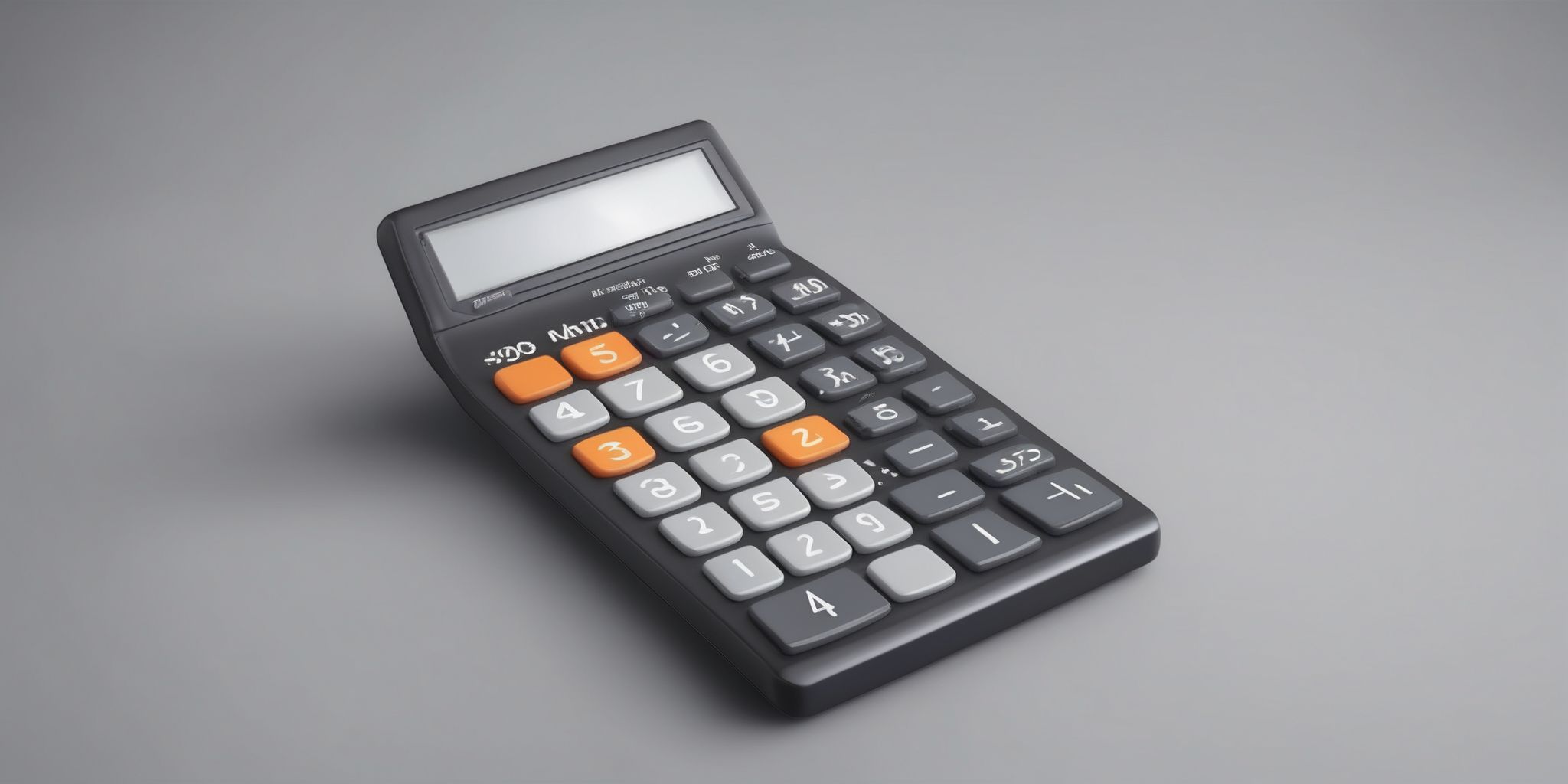Excel Your Personal Finance: How to Manage and Track your Finances
Are you tired of scrambling to pay bills at the end of each month? Or maybe you've just started earning and want to make sure you're not blindly spending every penny you make. Well, fear not! In this fast-paced world, it's easy to lose track of our personal finances, but with a little help from Excel, managing and tracking your money becomes surprisingly simple.
So brace yourself, because we're about to embark on a journey that will transform the way you handle your finances, and ultimately, your life. Get ready to become the master of your money!
Why Personal Finance Management is Important
Proactively managing your personal finances is vital for financial stability and future success. It allows you to gain better control over your income, expenses, and savings. By tracking your finances, you can identify areas where you may be overspending and make necessary adjustments.
Additionally, proper management helps you set and achieve financial goals, such as saving for a down payment on a house or planning for retirement. Without a grasp on your finances, you could miss out on opportunities for growth and struggle with unexpected expenses. Taking charge of your personal finance ensures a solid foundation for long-term financial wellbeing and empowers you to make informed decisions about your money.
The Benefits of Tracking Your Finances
Tracking your finances is a fundamental aspect of personal finance management. Here are some key benefits of tracking your finances:
- Increased Awareness: Tracking your finances allows you to gain a clear understanding of where your money is coming from and where it's going. This awareness helps you make informed decisions about your spending and identify areas where you can cut back or save.
- Better Budgeting: By tracking your expenses, you can create a realistic budget that aligns with your financial goals. It enables you to allocate your resources effectively and avoid overspending.
- Improved Financial Health: Monitoring your finances helps you track your progress towards your financial goals. It allows you to identify any financial leaks or inefficiencies and take corrective measures to improve your financial health.
- Enhanced Control: Tracking helps you take control of your money by providing insights into your financial patterns and habits. It empowers you to make proactive choices, such as reducing debt or increasing savings.
- More Informed Decision-Making: When you have a clear picture of your finances, you can make better decisions about investments, major purchases, or saving for the future.
Remember, tracking your finances is not just about recording numbers; it is a tool that empowers you to take charge of your financial well-being.
Setting Financial Goals
Identifying Short-term and Long-term Goals
Identifying short-term and long-term goals is a fundamental step in personal finance. Short-term goals typically cover the next few months to a year and include expenses like vacations or paying off debt. Long-term goals, on the other hand, extend over several years or even decades and involve major financial milestones such as buying a home or saving for retirement. By clearly defining these goals, you can prioritize your spending and saving accordingly.
For example, if your short-term goal is to save for a down payment on a house, you can allocate more funds towards that goal and adjust your budget accordingly. Having specific goals helps provide direction and motivation in managing your finances effectively.
SMART Goal Setting
SMART goal setting is a practical framework for defining and achieving financial objectives. SMART stands for Specific, Measurable, Achievable, Relevant, and Time-bound. Specific goals provide clear direction, such as saving for a down payment on a house. Measurable goals allow tracking progress, like aiming to reduce monthly expenses by 10%. Goals should be achievable, ensuring they are realistic and within reach. Relevant goals align with your financial priorities and aspirations.
Time-bound goals have a deadline, creating a sense of urgency and motivation.
For example, setting a goal to pay off credit card debt within a year. SMART goal setting helps transform abstract financial aspirations into actionable plans.
Creating a Budget
Understanding Your Income and Expenses
Understanding your income and expenses is vital for effective personal finance management. It allows you to have a clear overview of your financial situation and make informed decisions. Start by documenting all your income sources, such as salary, freelance work, or rental income. Then, evaluate your expenses by categorizing them into fixed (mortgage, utilities) and variable (groceries, entertainment) expenses. This analysis helps identify areas where you can cut back or allocate more funds.
For instance, if you notice that a significant portion of your income goes towards dining out, you can plan to cook more meals at home and save money. Regularly reviewing your income and expenses will help you stay on track with your financial goals and make necessary adjustments.
Categorizing and Prioritizing Expenses
Categorizing and prioritizing expenses is a fundamental aspect of personal finance management. By categorizing your expenses, you gain a clear understanding of where your money is being spent. This enables you to identify areas where you can cut back or make adjustments to achieve your financial goals. Prioritizing expenses involves determining which expenses are most important and aligning your spending accordingly.
For example, allocating a larger portion of your budget towards necessities like housing, transportation, and food, while reducing discretionary spending on non-essential items. This helps ensure that your financial resources are directed towards what matters most to you and helps you avoid overspending in areas that may not align with your priorities.
Tracking and Analyzing Spending Patterns
Tracking and analyzing spending patterns is a fundamental aspect of personal finance management. It provides valuable insights into your financial habits and helps identify areas where adjustments can be made. Here are some practical tips for effectively tracking and analyzing your spending:
- Categorize your expenses: Group similar expenses together to understand your spending patterns better. Categories may include groceries, utilities, transportation, entertainment, etc.
- Use technology: Utilize personal finance apps or online tools to automatically track and categorize your expenses. This simplifies the process and provides visual representations of your spending.
- Set spending goals: Establish monthly or weekly spending targets for each category. Compare your actual spending against these goals to evaluate your financial discipline.
- Monitor trends: Regularly review your spending patterns over time. Look for any trends or patterns that may indicate areas where you can cut back or increase savings.
By consistently tracking and analyzing your spending, you can gain better control over your finances and make informed decisions to achieve your financial goals.
Personal Finance Essentials: Saving and Investing
The Power of Saving: Tips and Techniques
- Emphasize the importance of saving money to achieve financial stability and future goals.
- Develop a habit of paying yourself first by setting aside a percentage of your income before spending.
- Practice smart spending by distinguishing between wants and needs, and finding ways to reduce expenses.
- Set up automatic transfers to a separate savings account to ensure consistent savings.
- Consider the benefits of compound interest by exploring different saving and investment options, such as high-yield savings accounts or index funds.
- Prioritize emergency savings to handle unexpected expenses and create a safety net.
- Start small if necessary, gradually increasing savings contributions over time.
- Stay motivated by visualizing your progress, celebrating milestones, and reminding yourself of the ultimate financial goals.
Different Investment Options and Their Risks
Different investment options offer varying levels of risk and return potential. Some common investment options include stocks, bonds, mutual funds, real estate, and commodities. Stocks, for instance, offer the potential for high returns but come with a higher level of risk due to market fluctuations. Bonds, on the other hand, tend to be less risky but offer lower returns. It's important to diversify your investment portfolio to spread out the risk.
For example, investing in a mix of stocks, bonds, and real estate can help mitigate the impact of market volatility. Understanding the risks associated with each investment option allows you to make informed decisions and align your investment strategy with your risk tolerance and financial goals.
Tracking Your Finances Using Excel
Setting Up Your Personal Finance Tracker
- Start by creating a spreadsheet in Excel or using a personal finance app to track your finances effectively.
- Organize your tracker by creating separate sheets for income, expenses, and overall budget.
- Include categories for different types of income and expenses, such as salary, rent, groceries, bills, and entertainment.
- Be diligent in recording all your financial transactions accurately and regularly.
- Utilize functions and formulas to calculate totals, averages, and percentages to gain insights into your spending habits.
- Use conditional formatting to highlight any inconsistencies or areas where you can make adjustments.
- Consider visualizing your financial data using charts or graphs to easily comprehend your financial patterns.
- Regularly review and update your tracker to ensure you stay on top of your personal finances.
Remember, setting up an effective personal finance tracker is an essential step towards managing and improving your financial situation.
Creating Income and Expense Sheets
Creating income and expense sheets is a fundamental element of managing personal finances. It allows you to track your cash flow, identify spending patterns, and make informed financial decisions. When creating your sheets, start by categorizing your income sources and expenses into clear and distinct categories. Use separate columns for dates, transaction descriptions, amounts, and categories.
Regularly update your sheets with accurate and up-to-date information to maintain an accurate financial picture. Analyzing your income and expense sheets will provide valuable insights into areas where you can cut back on spending, identify potential savings, and make adjustments to achieve your financial goals.
Utilizing Functions and Formulas for Analysis
Utilizing functions and formulas in Excel can greatly enhance your ability to analyze personal finance data. Functions like SUM, AVERAGE, and COUNT provide quick ways to calculate totals, averages, and counts, respectively. Formulas allow you to perform more complex calculations and manipulate data.
For example, you can use the IF function to conditionally categorize expenses or the VLOOKUP function to retrieve specific values from a larger dataset. By employing these tools, you can gain valuable insights into your income, expenses, savings, and investments. With a few simple formulas, you can track trends, identify patterns, and make informed financial decisions.
Visualizing Financial Data with Charts and Graphs
Visualizing financial data with charts and graphs is a powerful tool for gaining insights into your personal finances. By representing your income, expenses, and savings visually, you can easily identify trends and patterns.
For example, a line graph can show how your savings have grown over time, while a pie chart can highlight the percentage of your income allocated to different expense categories. These visualizations help you understand where your money is going and make informed decisions.
Additionally, charts and graphs make it easier to communicate and share your financial information with others, such as your financial advisor or family members.
Using Personal Finance Apps and Online Tools
Exploring Popular Personal Finance Apps
- Mobile apps have revolutionized the way we manage our finances.
- With a wide range of personal finance apps available, it's important to find one that suits your needs.
- Look for apps that offer budgeting tools to track your income and expenses.
- Consider apps that provide automatic expense categorization for easy analysis.
- Prioritize apps with goal-tracking features that help you stay on target.
- Look for apps that offer bill payment reminders to avoid late fees.
- Consider apps that provide investment tracking and portfolio management features.
- Explore apps with secure data encryption for safeguarding your financial information.
- Read user reviews and ratings to gauge the app's reliability and user experience.
Benefits and Drawbacks of Online Tools
Online tools offer several benefits for managing personal finances.
Firstly, they provide convenience and accessibility, allowing users to track their finances anytime, anywhere.
Additionally, these tools often offer automated features, such as expense categorization and bill reminders, which save time and reduce manual effort. Moreover, online tools often provide visual representations of financial data, making it easier to understand and analyze one's financial situation. However, there are some drawbacks to consider. Privacy and security concerns can arise when sharing personal financial information online. Furthermore, relying solely on online tools may limit one's financial knowledge and awareness. It's important to strike a balance between using online tools for convenience and maintaining a comprehensive understanding of personal finances.
Syncing Online Tools with Excel
["Syncing Online Tools with Excel"]
- Online personal finance tools can be valuable resources for managing finances efficiently.
- Syncing these tools with Excel allows for seamless integration and data transfer.
- By syncing, you can import financial data from online tools directly into Excel, eliminating the need for manual data entry.
- This integration enables you to consolidate your financial information in one place, providing a comprehensive view of your finances.
- With synced data, you can leverage Excel's powerful analysis features to gain deeper insights into your spending patterns, investment performance, and savings goals.
- Additionally, syncing allows for real-time updates, ensuring your Excel tracker portrays the most up-to-date financial picture.
- Some online tools provide automatic syncing options, while others may require exporting/importing data files.
- Regardless of the method, syncing with Excel enhances the accuracy and efficiency of personal finance management.
Tips for Successful Personal Finance Management
Consistency and Discipline
Consistency and discipline are fundamental in effectively managing personal finances. Consistently adhering to a budget allows you to track your income and expenses accurately. This helps identify areas where you can cut back or save.
Additionally, discipline plays a crucial role in maintaining good financial habits such as saving regularly and avoiding impulsive purchases. For instance, setting up automatic transfers to a savings account ensures consistent savings growth over time. Without discipline, it becomes easy to fall into the trap of overspending or neglecting long-term financial goals. By staying disciplined, you can achieve financial stability and make progress towards your desired outcomes.
Regular Financial Check-Ups
Regular financial check-ups are an integral part of personal finance management. By reviewing your financial situation periodically, you can ensure that you stay on track with your goals and make any necessary adjustments. During these check-ups, analyze your expenses, income, savings, and investments to identify areas for improvement. Evaluate if you are meeting your budgetary targets and if your investments are performing as expected.
If you notice any discrepancies or underperformance, take appropriate action, such as adjusting your spending habits or reallocating your investment portfolio. This proactive approach can help you stay financially healthy and make informed decisions for the future.
Seeking Professional Advice
Sometimes, managing personal finance can be challenging and complex. That's where seeking professional advice can be incredibly helpful. Financial advisors have the expertise and experience to provide tailored guidance based on your unique situation. They can help you optimize your investment strategies, create tax-efficient plans, and offer insights on maximizing your savings. Additionally, they can assist in long-term financial planning, such as retirement or education funds. By consulting with a professional, you can gain valuable knowledge and ensure you're making informed decisions to excel in your personal finance journey.
Final thoughts
Managing and tracking your personal finances is crucial for financial well-being. This article provides valuable tips on how to excel at managing your money using Microsoft Excel. It emphasizes the importance of creating a budget, tracking income and expenses, and setting financial goals. The article also explains how to utilize Excel's built-in templates and functions to simplify and automate tasks related to personal finance management.
By following these handy suggestions, you can gain better control over your finances and work towards achieving your financial objectives.


